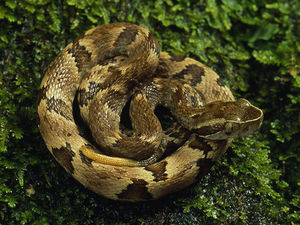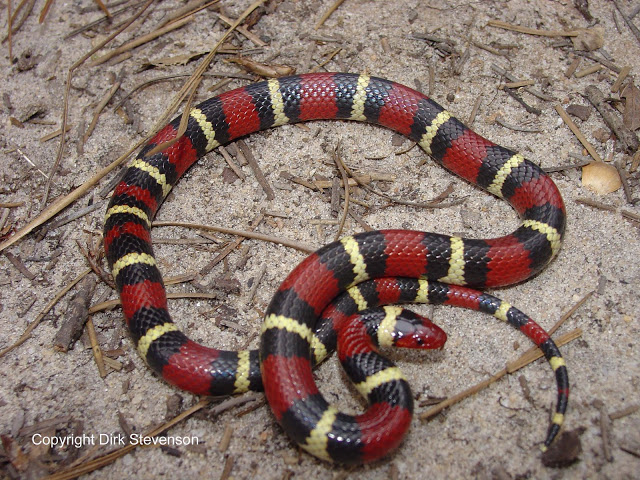Snakes
We have snakes on our land, so I'd like to start a list of the possible kinds we may encounter and which are dangerous.
Jararaca
Coral snake
Coral snakes are very poisonous, but are also extremely shy and will escape quickly from any rapid movement or loud noise, they will only attack a human as an absolute last option, so the basic rule when encountering a Coral snake is simply to give it room to get away easily. Coral snakes only accounted for 0.65% of the 75312 bites by venomous snakes in Brazil between 2001 and 2004.
If you are bitten by a Coral snake then a couple of important things to note are firstly that their poison is injected into the victim quite slowly taking up to five seconds, so pulling the snake off quickly and throwing it away can greatly reduce the amount of poison that enters the body. Secondly, the poison takes a few hours or more to begin taking effect, so you have plenty of time to get to a hospital, but make it a top priority because once the venom starts to take effect, it can prevent you from breathing.
Adult Coral snakes are usually 65 to 85 cm long, but can be up to 1.5m. They have a reddish body with 11-14 triads of black rings, tail short (with less than 2 full triads). Snout and chin white (usually with scales edged with black; and often with black spots), head with wide red band around middle. Dorsal junctions of red and black rings looks "jagged" because scale tend to be all red or all black. One pair of fixed, upper, front fangs.
They're limited to southeastern and south-central Brazil and found mainly in deciduous subtropical and tropical forests, cerrado savannas, and scrub-palm associations; from near sea level to about 600m elevation.









